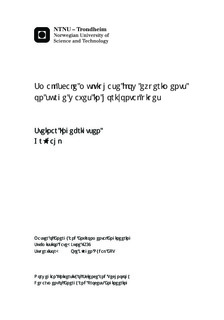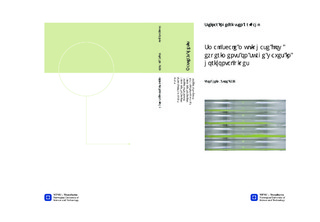| dc.description.abstract | Long surge waves are observed at the receiving separator after production ramp up on several gas-condensate fields. Surge waves are observed as long and slow oscillations in the liquid flow rate at the outlet of the pipeline, occurring in stratified three-phase flow. One single surge wave can have a duration of one hour and propagate over a distance of 100 km. The presence of surge waves can last for a couple of days, after production ramp up, before the flow is stabilized.Surge waves are caused by liquid accumulation in the pipeline. Liquid will accumulate in low spots in the pipeline during production shut down and at low gas flow rates, because the interfacial drag between the gas and the liquid is not strong enough to drag all the liquid along with the gas at low gas flow rates. When the gas flow rates are ramped up the accumulated liquid is eventually swept along with the gas, and finally the liquid arrives at the receiving facility in surge waves. Surge waves can cause operational problems. Unplanned production shut-in can be the consequence if the total liquid volume in the surge waves exceeds the liquid hanlding capacity at the receiving facility. Three-phase surge waves are often divided into a condensate surge followed by a water/MEG surge. Such cases can lead to hydrate formation in periods without MEG return. Surge waves have been difficult to predict by the available commercial transient multiphase flow simulators, and as they can cause severe operational problems, it is important to be able to predict, control and handle the presence of surge waves. Surge waves represent the main flow assurance challenge on the Ormen Lange field. Laboratory experiments on surge waves have been conducted in the multiphase flow lab at NTNU. The purpose of the lab experiments was to find out if it is possible to reproduce surge waves in the lab at NTNU. A 57,84 meter long test pipeline was configured with a dip geometry in the start. The lab experiments were conducted in two-phase with water and air as test fluids. Steady state stratified flow, with fixed gas and liquid flow rates, was established through the entire pipeline before the gas flow was choked and then ramped up again. This caused liquid to accumulate in the dip during the gas downtime. The liquid was then expelled through the pipeline in a wave when the gas flow was turned up again. Except for the very long wave duration and occurrence in three-phase flow, the result was waves with the characteristics of surge waves: Occurrence in the stratified flow regime, initiated because of liquid accumulation in a low spot during a change in the gas flow rate, a relatively smooth front, a low peak holdup between 7 and 17 % and ability to travel through the entire pipeline without getting totally smeared out. The wave duration was up to around 20 seconds at the end of the pipeline, which is relatively long for the relatively short and narrow (60 mm inner diameter) pipeline. The lab observations have been attempted simulated in OLGA and LedaFlow. OLGA is generally capable of reproducing the lab observations very well. OLGA predicted waves with very similar behavior as the observations for all the eight analyzed cases. The general trend was that OLGA predicted a slightly higher wave peak amplitude and a slightly lower wave velocity than what is seen in the lab observations. LedaFlow showed a much more poor performance than OLGA to simulate the lab observations. LedaFlow is only capable of reproducing a solution similar to the observations for two of the eight analyzed cases, which were the cases with highest Usg and lowest Usl. | nb_NO |

